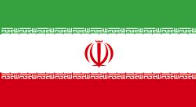
Iran is likely more interested in “being sneaky than being fast” regarding accelerating its proliferation post-strikes from the U.S. and Israel, a former State department official told the Exchange Monitor in an interview this week.
“Stealth, not speed, is the most important factor here,” Jeffrey Lewis, a nonproliferation expert and professor at the James Martin Center for Nonproliferation Studies at the Middlebury Institute of International Studies at Monterey, Calif. said in the interview. He said while the U.S. intelligence community is giving a timeline currently, Lewis says the number “depends on a lot of things,” like “how many centrifuges do they [Iran] have?”
A centrifuge, in the context of uranium, is a machine that spins uranium gas at high speeds to separate the isotopes, otherwise known as uranium enrichment, for nuclear fuel or potentially nuclear weapons.
Since the international community, and the U.N. nuclear watchdog the International Atomic Energy Agency (IAEA), does not know how many centrifuges Iran has in storage, as Lewis said, and Vice President J.D. Vance admits he does not know where the highly-enriched uranium (HEU) is, the timeline becomes murky.
A whirlwind week of tensions began last weekend, when the United States attacked Iran’s three key nuclear facilities early June 22 in an attack called Operation Midnight Hammer, solidifying the nation’s involvement in the conflict between Israel and Iran. This attack was after an Israeli attack on the facilities June 13.
The attack involved American B-2 bombers, which were reportedly used to drop Boeing 30,000-pound GBU-57/B Massive Ordnance Penetrators, often called “bunker busters,” on the Fordow and Natanz facilities, media reported. Tomahawk missiles were used to strike the Esfahan facility.
Currently, a tenuous ceasefire stands between Israel and Iran. The head of U.N. nuclear watchdog the International Atomic Energy Agency told a French radio station Thursday that the centrifuges at mountain Fordow are “no longer operational,” and a leaked, preliminary intelligence report gave what President Donald Trump called an “inconclusive” assessment of the damage at the sites. The preliminary assessment says the setback for Iran’s program is a few months.
However, Lewis said while the bunker busters did “destroy the three highest profile facilities for enriching uranium,” being Natanz, Fordow and Isfahan, the U.S. “left a bunch of other stuff in place.” He said the centrifuge workshops the U.S. hit were “pretty much all empty,” as Iran moved all the materials to an underground complex “not far from Natanz.”
“No one even knows where the HEU is now!” Lewis said in an X thread earlier in the week. “@rafaelmgrossi says Iran moved it. Lil’ @marcorubio says nothing can move in Iran. But trucks are moving in Iran. Trucks and heavy equipment showed up at least two days ago to seal the tunnels to protect them.”
“The U.S. left the other mountain at Natanz, all the tunnels at the conversion facility at Isfahan,” and “the new enrichment facility at Isfahan, but those things are all still there plus any facilities we didn’t know about,” Lewis said in the interview, alluding to “secret facilities” the U.S. and international community might not know about.
With Iran pledging to break its commitment to the IAEA, the tunnels and facilities still remaining, an unknown number of centrifuges, and missing HEU, Iran is “probably more interested in being sneaky than being fast” when it comes to its proliferation program, Lewis said.